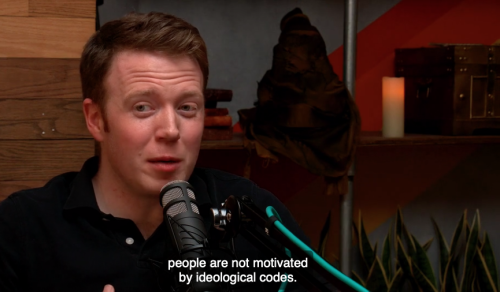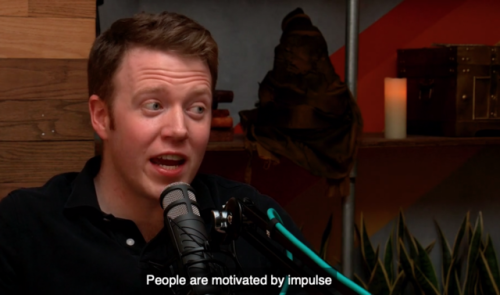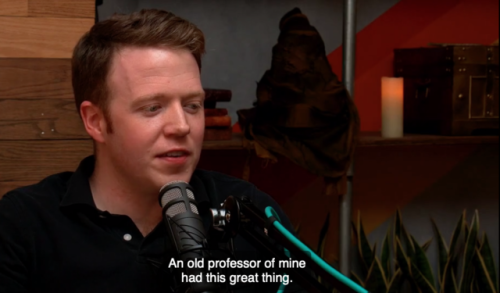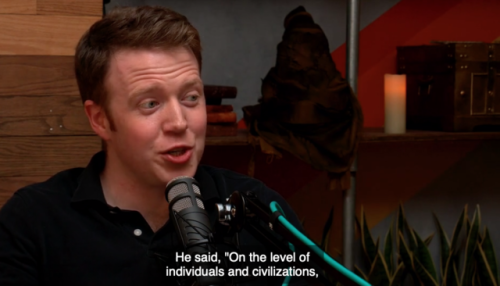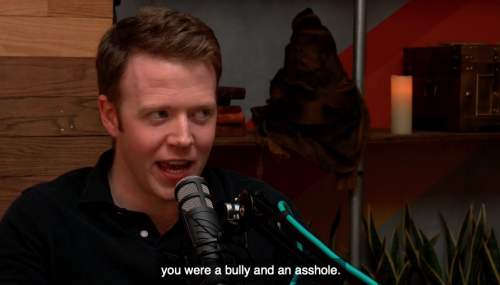I Realized Why The Idea Of Constellations Has Always Swayed Me. Constellations Are So Very Human.
I realized why the idea of constellations has always swayed me. constellations are so very human.
our wonder of the stars is bone-sunk; we’ve been thinking and dreaming and watching and watching and watching since the beginning of time, and we looked for so long that we started making connections.
we played a celestial game of connect-the-dots; trying to find order in something so vast and trying to show that the stars are in everything and everything is in the stars.
we plucked pictures out of the infinite; there’s a dog, there’s a bear, there’s a lion, see? look, right there; the stars hold and mirror back everything.
but then it went a step further. instead of everyday things, we stopped picking out the cups and the bears, and instead we saw stories.
look, there’s Andromeda, chained to a rock and waiting to be devoured by Cetus. there’s Orion, and Hercules, and do you see Orpheus’ lyre? Zeus sent an eagle to retrieve it after Orpheus’ death and he placed it in the sky.
we did the most human thing imaginable: we wrote our stories into the stars. we filled the night sky; previously so vast, so unknowable; with our history. we forged connections to the stars and made it so our children will always know where they come from.
More Posts from Thecaffiend and Others
tell me a pretty thing.

c a s u a l
“If you inherently long for something, become it first. If you want gardens, become the gardener. If you want love, embody love. If you want mental stimulation, change the conversation. If you want peace, exude calmness. If you want to fill your world with artists, begin to paint. If you want to be valued, respect your own time. If you want to live ecstatically, find the ecstasy within yourself. This is how to draw it in, day by day, inch by inch.”
— Victoria Erickson
You know what the second I stopped saying “I wish I had a friend who-“ and started being “the friend who-“ my life has gotten 100% more fulfilling
I love how the search function on this site is absolute garbage. I can look up a post word for word and I will NEVER find it
economists really took the divine right of kings and turned it into billionaire CEOs
6 Ways NASA Technology Makes You Healthier
An important part of our mission is keeping astronauts strong and healthy during stays in space, but did you know that our technology also helps keep you healthy? And the origins of these space innovations aren’t always what you’d expect.
As we release the latest edition of NASA Spinoff, our yearly publication that celebrates all the ways NASA technology benefits us here on Earth, let’s look at some ways NASA is improving wellness for astronauts—and everyone else.
1. Weightless weight-lifting

Without gravity to work against, astronauts lose bone and muscle mass in space. To fight it, they work out regularly. But to get them a good burn, we had to get creative. After all, pumping iron doesn’t do much good when the weights float.
The solution? Elastic resistance. Inventor Paul Francis was already working on a portable home gym that relied on spiral-shaped springs made of an elastic material. He thought the same idea would work on the space station and after additional development and extensive testing, we agreed.
Our Interim Resistive Exercise Device launched in 2000 to help keep astronauts fit. And Francis’ original plan took off too. The technology perfected for NASA is at the heart of the Bowflex Revolution as well as a new line of handheld devices called OYO DoubleFlex, both of which enable an intensive—and extensive—workout, right at home.
2. Polymer coating keeps hearts beating

A key ingredient in a lifesaving treatment for many patients with congestive heart failure is made from a material a NASA researcher stumbled upon while working on a supersonic jet in the 1990s.
Today, a special kind of pacemaker that helps synchronize the left and right sides of the heart utilizes the unique substance known as LaRC-SI. The strong material can be cast extremely thin, which makes it easier to insert in the tightly twisted veins of the heart, and because it insulates so well, the pacemaker’s electric pulses go exactly where they should.
Since it was approved by the FDA in 2009, the device has been implanted hundreds of thousands of times.
3. Sutures strong enough for interplanetary transport

Many people mistakenly think we created Teflon. Not true: DuPont invented the unique polymer in 1938. But an innovative new way to use the material was developed to help us transport samples back from Mars and now aids in stitching up surgery patients.
Our scientists would love to get pristine Martian samples into our labs for more advanced testing. One complicating factor? The red dust makes it hard to get a clean seal on the sample container. That means the sample could get contaminated on its way back to Earth.
The team building the cannister had an idea, but they needed a material with very specific properties to make it work. They decided to use Polytetrafluoroethylene (that’s the scientific name for Teflon), which works really well in space.
The material we commonly recognize as Teflon starts as a powder, and to transform it into a nonstick coating, the powder gets processed a certain way. But process it differently, and you can get all kinds of different results.
For our Mars sample return cannister prototype, the powder was compressed at high pressures into a block, which was then forced through an extruder. (Imagine pressing playdough through a mold). It had never been done before, but the end result was durable, flexible and extremely thin: exactly what we needed.
And since the material can be implanted safely in the human body—it was also perfect as super strong sutures for after surgery.
4. Plant pots that clean the air

It may surprise you, but the most polluted air you breathe is likely the air inside your home and office. That’s especially true these days with energy-efficient insulation: the hot air gets sealed in, but so do any toxins coming off the paint, furniture, cooking gas, etc.
This was a problem NASA began worrying about decades ago, when we started planning for long duration space missions. After all, there’s no environment more insulated than a spaceship flying through the vacuum of space.
On Earth, plants are a big part of the “life support” system cleaning our air, so we wondered if they could do the same indoors or in space.
The results from extensive research surprised us: we learned the most important air scrubbing happens not through a plant’s leaves, but around its roots. And now you can get the cleanest air out of your houseplants by using a special plant pot, available online, developed with that finding in mind: it maximizes air flow through the soil, multiplying the plant’s ability to clean your air.
5. Gas sensor detects pollution from overhead

Although this next innovation wasn’t created with pollution in mind, it’s now helping keep an eye on one of the biggest greenhouse gasses: methane.
We created this tiny methane “sniffer” to help us look for signs of life on Mars. On Earth, the biggest source of methane is actually bacteria, so when one of our telescopes on the ground caught a glimpse of the gas on Mars, we knew we needed to take a closer look.
We sent this new, extremely sensitive sensor on the Curiosity Rover, but we knew it could also be put to good use here on our home planet. We adapted it, and today it gets mounted on drones and cars to quickly and accurately detect gas leaks and methane emissions from pipelines, oil wells and more.
The sensor can also be used to better study emissions from swamps and other natural sources, to better understand and perhaps mitigate their effects on climate change.
6. DNA “paint” highlights cellular damage

There’s been a lot of news lately about DNA editing: can genes be changed safely to make people healthier? Should they be?
As scientists and ethicists tackle these big questions, they need to be sure they know exactly what’s changing in the genome when they use the editing tools that already exist.
Well, thanks to a tool NASA helped create, we can actually highlight any abnormalities in the genetic code with special fluorescent “paint.”
But that’s not all the “paint” can do. We actually created it to better understand any genetic damage our astronauts incurred during their time in space, where radiation levels are far higher than on Earth. Down here, it could help do the same. For example, it can help doctors select the right cancer treatment by identifying the exact mutation in cancer cells.
You can learn more about all these innovations, and dozens more, in the 2019 edition of NASA Spinoff. Read it online or request a limited quantity print copy and we’ll mail it to you!
Give me body horror in magic.
Give me pyromancy that burns the skin off your hand until your bones are showing. Give me arcane that cooks you inside-out from manaburn. Give me cryomancy that cracks your skin and chips it away. Give me necromancy that causes your teeth to turn necrotic and your eyes to glass over white.
I don’t want cute magic. I want magic to be a raw and dangerous force. I want those who harness it to feel the full effects of what a great and terrible thing it is. I want mages who wear the effects of their magic on their skin and in their bones.
That’s the good stuff.
-
 holly-berry-smoothie liked this · 2 months ago
holly-berry-smoothie liked this · 2 months ago -
 353f3e reblogged this · 3 months ago
353f3e reblogged this · 3 months ago -
 ketavinsky reblogged this · 3 months ago
ketavinsky reblogged this · 3 months ago -
 lovedunexpectedly liked this · 3 months ago
lovedunexpectedly liked this · 3 months ago -
 nerdyandboredaf reblogged this · 3 months ago
nerdyandboredaf reblogged this · 3 months ago -
 nerdyandboredaf liked this · 3 months ago
nerdyandboredaf liked this · 3 months ago -
 readiculous01 reblogged this · 4 months ago
readiculous01 reblogged this · 4 months ago -
 boiiiidontknoooo-blog liked this · 4 months ago
boiiiidontknoooo-blog liked this · 4 months ago -
 luxaii liked this · 4 months ago
luxaii liked this · 4 months ago -
 h0ne4bee liked this · 4 months ago
h0ne4bee liked this · 4 months ago -
 temmietheaflower liked this · 5 months ago
temmietheaflower liked this · 5 months ago -
 swear2g-d liked this · 6 months ago
swear2g-d liked this · 6 months ago -
 theheartendures reblogged this · 6 months ago
theheartendures reblogged this · 6 months ago -
 theheartendures liked this · 6 months ago
theheartendures liked this · 6 months ago -
 queermarzipan reblogged this · 6 months ago
queermarzipan reblogged this · 6 months ago -
 ladyofthelivingearth reblogged this · 6 months ago
ladyofthelivingearth reblogged this · 6 months ago -
 allarounddivinity liked this · 9 months ago
allarounddivinity liked this · 9 months ago -
 kamamo1 liked this · 9 months ago
kamamo1 liked this · 9 months ago -
 artsy-imaginarium reblogged this · 9 months ago
artsy-imaginarium reblogged this · 9 months ago -
 bringmethepeculiar liked this · 9 months ago
bringmethepeculiar liked this · 9 months ago -
 petricore01 liked this · 9 months ago
petricore01 liked this · 9 months ago -
 1001layla liked this · 9 months ago
1001layla liked this · 9 months ago -
 mysticthemulticolouredmew liked this · 10 months ago
mysticthemulticolouredmew liked this · 10 months ago -
 lovemeorlovemycloset liked this · 10 months ago
lovemeorlovemycloset liked this · 10 months ago -
 justanotherbookwyrm liked this · 10 months ago
justanotherbookwyrm liked this · 10 months ago -
 bee636373 liked this · 10 months ago
bee636373 liked this · 10 months ago -
 mightyvulgargenius liked this · 11 months ago
mightyvulgargenius liked this · 11 months ago -
 0193598 liked this · 11 months ago
0193598 liked this · 11 months ago -
 jodieliker reblogged this · 11 months ago
jodieliker reblogged this · 11 months ago -
 brokendarkfairyempressforever reblogged this · 11 months ago
brokendarkfairyempressforever reblogged this · 11 months ago -
 brokendarkfairyempressforever liked this · 11 months ago
brokendarkfairyempressforever liked this · 11 months ago -
 hijabi-flavored-nerd reblogged this · 11 months ago
hijabi-flavored-nerd reblogged this · 11 months ago -
 jodieliker liked this · 1 year ago
jodieliker liked this · 1 year ago -
 my-cover-story27 liked this · 1 year ago
my-cover-story27 liked this · 1 year ago -
 dsjinspring reblogged this · 1 year ago
dsjinspring reblogged this · 1 year ago -
 dsjinspring liked this · 1 year ago
dsjinspring liked this · 1 year ago -
 justheretoread-ao3 reblogged this · 1 year ago
justheretoread-ao3 reblogged this · 1 year ago -
 justheretoread-ao3 liked this · 1 year ago
justheretoread-ao3 liked this · 1 year ago -
 apastrek reblogged this · 1 year ago
apastrek reblogged this · 1 year ago -
 zac1h5i liked this · 1 year ago
zac1h5i liked this · 1 year ago -
 distinguishedunknowndonut liked this · 1 year ago
distinguishedunknowndonut liked this · 1 year ago -
 zhem1x5 liked this · 1 year ago
zhem1x5 liked this · 1 year ago -
 leaguerpg reblogged this · 1 year ago
leaguerpg reblogged this · 1 year ago -
 kef9443 liked this · 1 year ago
kef9443 liked this · 1 year ago
